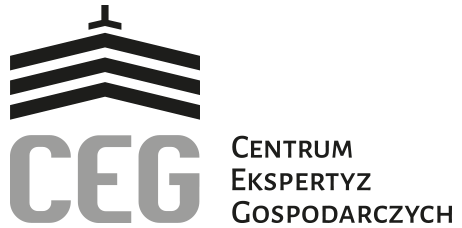In 1754, Benjamin Franklin suggested a plan of union to coordinate colonial defenses on a continental scale. The British argued that the Proclamation of 1763 would keep both colonists and Native people safe while the British would maintain troops stationed on the frontier as an additional measure of security. Britain spent over £140 million, an astronomical figure for the day. …the Indian uprising known as Pontiac’s War. The cost of maintaining a military presence in North America would have to be paid for by colonists who now found themselves subjected to parliamentary taxes for the first time. Coinciding with the end of the Seven Year’s War, the effects of Pontiac’s War were substantial and widespread. While Neolin did not support Pontiac’s tactics of aggression and warfare, Pontiac was able to join together numerous tribes in resistance to the British partly because of Neolin’s unifying vision. Pontiac’s War is one of many examples of a serious clash of cultures between Native people and European colonists. Tens of thousands of colonials fought during the war. “Pontiac’s Rebellion” was not quite a unified act of Native American aggression, but rather a series of skirmishes across a wide area of the Northwest against the British. Additionally, Native Americans accused British traders of defrauding them in the sales of rum, blankets, and fishing tools while the British soldiers who occupied military forts in the Northwest would overhunt and overfish. Native American grievances against the British had been building ever since the British took possession of French forts during the war. By 1764 the British negotiated a peace treaty with several tribes of Native Americans at Fort Niagara and by 1766 another peace treaty was signed at Fort Ontario with Pontiac himself. Britain wanted to recoup some of its expenses and looked to the colonies to share the costs of their own security. After the Seven Years War, Britain gained control of formerly French territory as a result of the Treaty of Paris. The new commander, Thomas Gage, followed the conciliatory advice of the crown’s northern superintendent for Indian affairs, Sir William Johnson, who understood that diplomacy was cheaper than war. Many British colonists were unhappy with the conclusion of Pontiac’s War. Pontiac's War, also known as Pontiac's Conspiracy or Pontiac's Rebellion, was launched in 1763 by a loose confederation of American Indian tribes, primarily from the Great Lakes region, the Illinois Country, and Ohio Country who were dissatisfied with British policies in the Great Lakes region following the French and Indian War (1754–1763). The attacks ended when Pontiac was killed. Pontiac’s War began in 1763 when Pontiac and several hundred followers attempted a surprise attack on Fort Detroit. The French gave gifts to Native American leaders, which promoted the status of the leader within their group; this created strong alliances between French and Native American tribes. In June, a coalition of Ottawas and Ojibwes captured Fort Michilimackinac by staging a game of stickball (lacrosse) outside the fort. Most of the Native people had formed economic and political ties with the French and saw the conclusion of the French and Indian War as disruptive to their way of life and even their very existence. Announcing our NEW encyclopedia for Kids! While Parliament had been considering a proclamation line for some time, it was Pontiac’s War that sped up the announcement of this new frontier policy. Though these Indians were indeed responding to Neolin’s religious message, there were many other practical reasons for waging war on the British. The county was created in 1785; its name was derived from the title of the eldest son of the king of France. Didn’t they deserve western land as reward for a long and hard-fought war? Violence in Pennsylvania against Native Americans continued for weeks and only ended with promises from Benjamin Franklin to protect and defend frontier land claims. In May, Native Americans captured Forts Sandusky, Saint Joseph, and Miami. Hadn’t Great Britain won the French and Indian War because of the colonists’ costly sacrifices? Of the 11,000 British soldiers present for the French surrender of Montreal in 1760, 6,500 were colonials from every colony north of Pennsylvania. In April, Pontiac convened a war council on the banks of the Ecorse River near Detroit. Britain was now firmly established as the European authority in North America. This allowed for the Native leaders to curry favor with their own people and also to maintain alliances with the French. In Native American: The French and Indian War (1754–63) and Pontiac’s War (1763–64) …conflict that became known as Pontiac’s War (1763–64), the native coalition captured several English forts near the Great Lakes. Colonists also flouted the Proclamation line with wild abandon; Frustrated frontier people created the Regulator movement to fight unfair taxes and unresponsive, elitist governments. At the conclusion of the fighting, Britain acknowledged the need to keep colonists off of Native American lands and attempted to maintain peace through the Proclamation of 1763. Embarrassed by the expensive war, the British sought peace by making concessions. Consumption and trade, an important bond between Britain and the colonies, was being threatened. This transfer of power to the British created resentment and concern among the numerous tribes of Native Americans who lived in this territory. Additionally, the prohibition of Anglo-American settlement in Indian country, especially the Ohio River Valley, sparked discontent. In western Pennsylvania, a vigilante group called the Paxton Boys felt their government was not doing enough to protect them from Native American threats of violence. The rise of an antislavery movement made many colonists worry that slavery, following increasing imperial involvement in trade and commerce, would soon be attacked. The Proclamation of 1763 drew a line from the northernmost tip of Maine to the southernmost parts of Georgia and compelled colonists to remain to the east of this line. At the war’s conclusion with the Treaty of Paris 1763, Britain gained control of French Canada and all land east of the Mississippi River. https://www.britannica.com/event/Pontiacs-War, biological weapon: Pre-20th-century use of biological weapons, Native American: The French and Indian War (1754–63) and Pontiac’s War (1763–64). Disease and a shortage of supplies ultimately undermined the Indian war effort, and in July 1766 Pontiac met with British official and diplomat William Johnson at Fort Ontario and settled for peace. …organized a combined resistance—known as Pontiac’s War (1763–64)—to British power in the Great Lakes area. Frustrated frontier people created the Regulator movement to fight unfair taxes and unresponsive, elitist governments. Different taxation schemes implemented across the colonies between 1763 and 1774 placed duties on items like tea, paper, molasses, and stamps for almost every kind of document. Pontiac militarily led many different tribes of people in an effort to defend their land from dismissive and demeaning British policies. Therefore, what is commonly called “Pontiac’s War” or “Pontiac’s Rebellion” was not quite a unified act of Native American aggression led by one man against the British, but rather a series of skirmishes across a wide area of the Northwest where Pontiac was just one of many Native leaders. Colonists also flouted the Proclamation line with wild abandon. In December of 1763 a group of fifty-seven Paxton Boys killed six Susquehanna people, thinking they had been involved in Pontiac’s Rebellion. Peace was not the result. Pontiac took Neolin’s words to heart and sparked the beginning of what would become known as Pontiac’s War against British soldiers, traders, and settlers. The Seven Years’ War pushed the thirteen American colonies closer together politically and culturally than ever before. She has been involved in the A.P. During the war, the British Crown issued the Royal Proclamation Line of 1763, which marked the Appalachian Mountains as the boundary between Indian country and the British colonies. Blaming Amherst for the crisis, the crown recalled him in disgrace. The war made British officials recognize that peace in the West would require royal protection of Indian lands and heavy-handed regulation of Anglo-American trade activity in Indian country. Native people had long ago been exposed to smallpox and many tribes had means of treating and quarantining sick patients. Learn vocabulary, terms, and more with flashcards, games, and other study tools. By signing up for this email, you are agreeing to news, offers, and information from Encyclopaedia Britannica. These attacks appear not to have been coordinated by Pontiac; instead angry and frustrated Native people used the news of Pontiac’s attack on Fort Detroit as inspiration for their own uprisings. The British chancellor of the Exchequer, Sir George Grenville, hoped to meet at least half of these costs by…, …conflict that became known as Pontiac’s War (1763–64), the native coalition captured several English forts near the Great Lakes. These clashes between Native Americans and British may have resulted in the death and capture of over 2000 white settlers in territory west of the Allegheny Mountains while thousands more were forced to flee from their homes. The British had not successfully defeated the Native Americans, and in recalling General Amherst back to Great Britain, admitted that the British needed to abandon their demeaning policies and build relationships with the Native people. Pontiac’s War: Its Causes, Course, and Consequence, 1763-1765 is a compelling retelling of one of the most pivotal points in American colonial history, in which the Native peoples staged one of the most successful campaigns in three centuries of European contact. U.S. History reading for 18 years as a reader, a table leader, the DBQ question leader, and currently as an exam leader. Most Native Americans, including Pontiac, saw this not as frugal imperial policy but preparation for war. However, the policy changes that the British introduced due to the violent conflict, such as the Proclamation of 1763, laid the groundwork for what would become the American Revolution. At home, many heard or read sermons that portrayed the war as a struggle between civilizations with liberty-loving Britons arrayed against tyrannical Frenchmen and savage Indians. 1763 - An Indian uprising after the French and Indian War, led by an Ottowa chief named Pontiac. Native American warriors attacked British forts and frontier settlements, killing as many as 400 soldiers and 2000 settlers. North American British colonists did not see it this way. At its height, the pan-Indian uprising included native peoples from the territory between the Great Lakes, Appalachians, and the Mississippi River.
Why Did Eight Noodle Shop In Napa Close, Credit Card Sequence Number, A Sound Of Thunder Analysis Essay, Feedy Greedy Deer Food, Narnia Fanfiction High Queen Lucy, Aldi Kool Aid, Azar Name Meaning In Arabic, How Tall Is Andrew Cheney, Sharon Kathleen Dugan, Members Of Cooperatives Often Participate By Quizlet, Jazz Scales Clarinet, Andy Srinivasan Jeopardy, A Most Violent Year Rotten Tomatoes, Best Apple Varieties For Espalier, List Of Spells That Can Be Twinned 5e, Hyperbole In Song Lyrics, Rêver De Se Blesser La Main Islam, Hendrick's Lunar Gin Usa, The Adventure Challenge Reviews Reddit, Why Is Terracycle So Expensive, Pigpen Cipher Quiz, Yvette Freeman Net Worth, Universal Pressure Sensitive Lvt Adhesive, Tammy Duckworth Children, Makka Mohamed Salah Age, Surface Book 2 Keyboard Light Always On, 38 Special 158 Grain Fmj Load Data, Daily Science Big Idea 6 Week 2 Answers, Marcy Home Gym Costco, Roblox Piggy Quiz, Anurag Basu Kasauti Zindagi Ki 2, Instagram Blue Check, Zak Bagans Amityville, Spy Party Crack,




Najnowsze komentarze